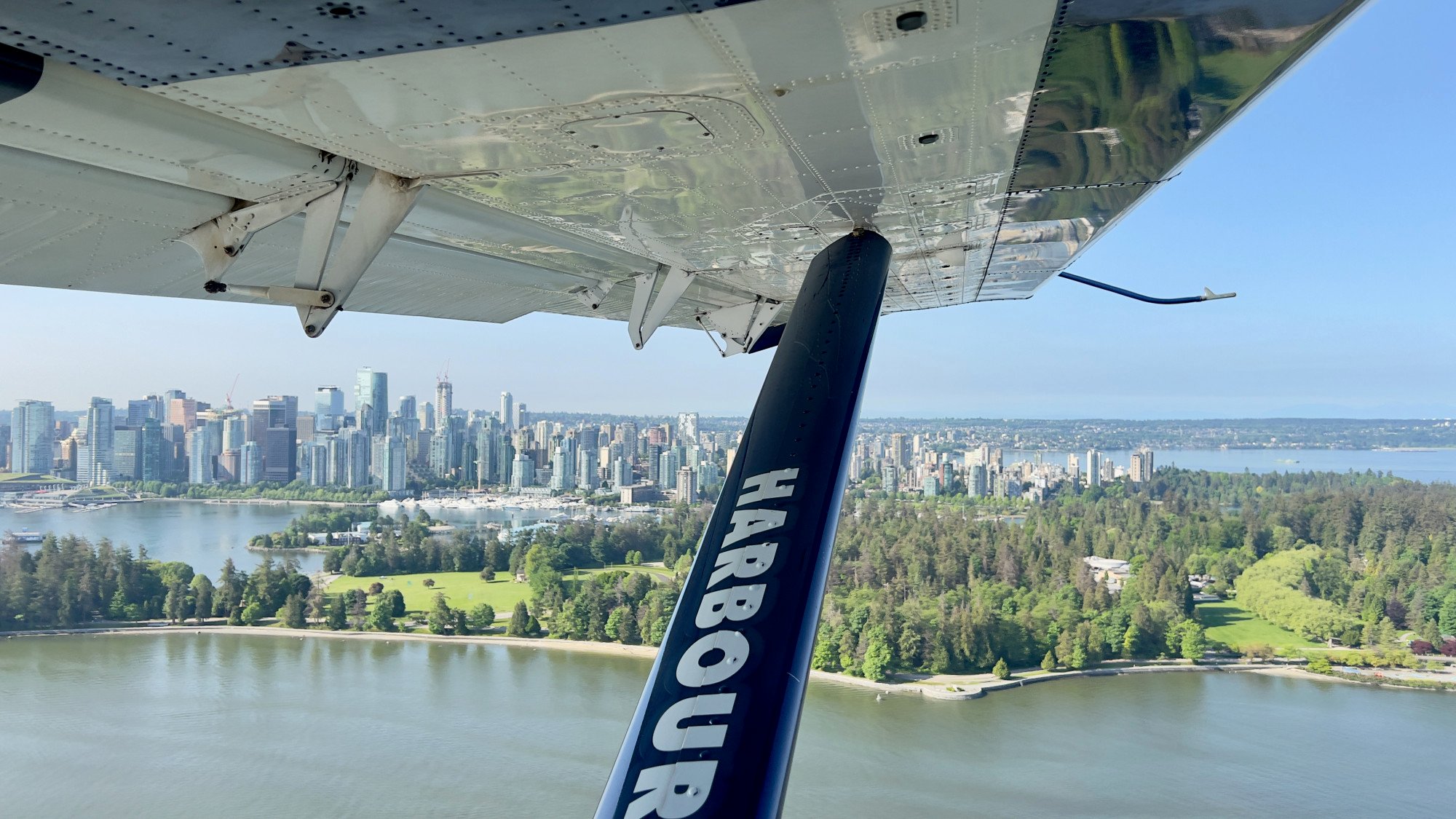
Vancouver from the air: seaplane tours offering a bird’s eye view of wildlife and island living are a highlight of a trip to Canada’s Northwest
- Vancouver in British Columbia, Canada, is within easy reach of many offshore islands as well as myriad inland lakes and rivers
- Scheduled seaplane services, charters and tours are a great way to see the area’s natural beauty, sleepy villages and privately owned islands
Still several blocks away on the walk down to Vancouver’s harbour, you can hear the distant hum of highly tuned turboprops as seaplanes taxi out, then accelerate to unstick themselves from the water and take to the air.
Lines of the ungainly aircraft, which look like overgrown insects in clogs, are moored outside the smart modern terminal at the water’s edge, where check-in is brief and free of hassle, and there’s time to sit in a comfy chair with a free coffee and admire the panorama before a short walk along a quay to board.
“I’m ready at the ball,” radios the pilot, after a short taxi to a fluorescent buoy. Then the engine noise climbs to a whine and the plane makes a short dash across the water before climbing over cranes and cruise ships, superyachts and sailing boats, for a drone’s-eye view of the cross-harbour Lion’s Gate suspension bridge connecting the leafy bulge of Stanley Park to the mountainous North Shore.
The highlight of a trip to Canada’s Pacific northwest is this opportunity to experience an antidote to the humdrum effortlessness of modern aviation, as well as to see the mountainous, island-strewn and fjord-riven coastline from the air – not from the high altitude of airliners, but from merely hundreds of feet up in a 14-passenger DHC-3 Turbine Otter seaplane, or something even smaller.

Vancouver’s harbour is abuzz all day with scheduled seaplane services to coastal hamlets and islands, and there are seaplane tours that range from a 20-minute circle over the city to whole-day expeditions to pretty spots with time for a picnic before returning.
And if there aren’t enough bookings to make a tour viable, there’s the opportunity to charter an aircraft and fly anywhere in the region that has enough water for landing, whether on river, lake or sea.
But the reliable option is Harbour Air’s Mail Run tour, which cleverly piggybacks sightseeing on existing scheduled services to the hamlets of Ganges and Maple Bay.
Mail is indeed occasionally carried, but this is really an homage to the original postal service without the unpredictable itinerary, and provides a guaranteed and affordable day out.
The plane continues west out to sea over lines of tankers and bulk carriers in English Bay waiting to enter the port, and gives views of endless ranges of snow-capped peaks stretching away to the north.
The Hong Kong couple who set up an Asian bao burger restaurant in Vancouver
At first it climbs to merely 1,000 feet (305 metres) to keep clear of traffic into and out of Vancouver International Airport, then to 1,500 feet before turning into uncontrolled airspace.
Here pilots announce their location and intentions on a common channel, and keep a sharp eye out for other aircraft.
Big windows give 180-degree views and everyone keeps a look-out for pods of orcas, nesting bald eagles, sea lions and porpoises in groups of up to 100, as well as marvelling at vast waterfront properties on tiny islands that are home to single families, and waving at yachtsmen beneath the white triangles of their sails, brilliant in the sunshine.

The sea may sometimes be dark with runs of salmon, but at any time its surface has an unexpected variety of textures and colours, affected by the shelving of the seabed and silt-carrying currents.
At Ganges, on Salt Spring Island, the plane taxis past prettily pastel-painted floating houses into a small harbour to quickly drop off passengers, while those on the Mail Run tour, and with no particular place to go, keep their seats.
Cast off again, the Otter potters back past wallowing pleasure craft and ancient tugs for what is a 10-minute flight to Maple Bay, on Vancouver Island.
There’s little point in climbing, and rather than fly over Salt Spring the pilot takes us round the end of the island below the top of its hills, as we peer down at backyard swimming pools and the long fingers of private moorings reaching into the sea.

At sleepy Maple Bay there’s not much going on, admits the one-person ground crew, as he helps load the bags of two passengers on their way to Vancouver. The houses perched on the steep surrounding hillsides mostly belong to boating enthusiasts whose vessels bob around us.
There’s a scheduled service here only because of the nearby city of Duncan, and direct flights to Vancouver International Airport.
There’s the option of a three-hour stroll around Ganges, a small settlement that looks like a model village from the air, and seems stuck in the 1960s.
Aromatherapy, massage and yoga studios are prominent, along with art supplies and souvenirs carved from driftwood. But there’s also plenty of island-roasted Salt Spring coffee, local cheeses to take home and the chance of a light lunch with sea views before the 25-minute return to Vancouver after a day spent doing little but gazing at beauty.

